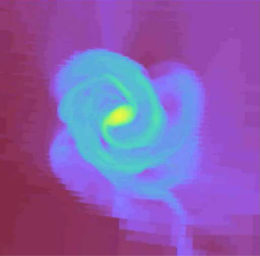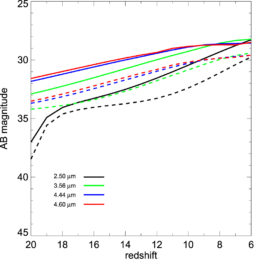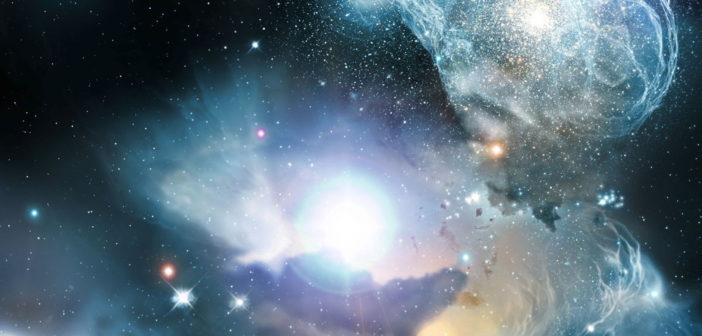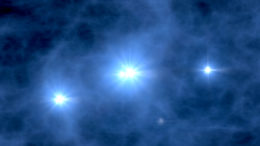The collapse of enormous stars in our early universe may have given birth to the first supermassive black holes. But will we be able to find these early, giant stars to test this theory?
Considering Giant Seeds
An unsolved mystery of our universe is how the very first quasars — powerful, accreting supermassive black holes — formed. Based on our observations, these earliest quasars had less than a billion years to grow to a billion solar masses. So what seeded these monsters, jump-starting them on their way to this tremendous size?One theory is that they resulted from the direct collapse of enormous early stars, known as supermassive primordial stars. These giant stars are a little different from typical population III stars, the first generation of stars theorized to form from the metal-poor gas of our early universe.
While ordinary pop III stars cap out at around 1,000 solar masses, supermassive primordial stars form in primordial halos that are — by one means or another — prevented from collapsing into stars until after they reach masses of 107-108 solar masses. According to models, these halos then undergo sudden cooling and catastrophic collapse, resulting in rapidly accreting stars that are much larger than typical pop III stars.

An accretion disk at 0.625 Myr in the authors’ simulations of forming supermassive primordial stars. [Surace et al. 2018]
Hide and Seek
The theory of supermassive primordial stars suggests that these giants could undergo gravitational instabilities and directly collapse into black holes, seeding the earliest quasars in our universe. So how do we test this picture?
The first step is to find observational evidence of supermassive primordial stars! Unfortunately, there’s a catch: these stars would generally evolve as cool, red hypergiants, possibly shrouded by the dense flows of gas accreting onto them. Do we stand a chance of being able to spot these giants with upcoming technology? Or will they remain hidden to us?
In a recent study led by Marco Surace (University of Portsmouth, UK), a team of scientists have modeled supermassive primordial stars to answer these questions.
Exploring Visibility

Near-infared AB magnitudes for two primordial stars formed in the authors’ simulations (solid and dashed lines), shown in the JWST NIRCam bands (different colors). JWST NIRCam’s predicted detection limits are at ~31.5. [Surace et al. 2018]
The authors find that the accretion envelopes surrounding these stars may be helpful rather than detrimental: rather than obscuring the stars, this gas can enhance the stars’ visibility by reprocessing the short-wavelength radiation from the star into photons that we can detect with our near-infrared telescopes.
Surace and collaborators show that some of these supermassive primordial stars will, indeed, be visible to JWST out to redshifts of z ~ 20, and they may even be detectable by the wide-field Euclid and WFIRST missions if some of these stars are modestly gravitationally lensed by foreground objects. This is a promising result, leaving us with some hope that the next generation of telescopes will help us to finally address the mystery of how the first quasars formed in our universe.
Citation
“On the Detection of Supermassive Primordial Stars,” Marco Surace et al 2018 ApJL 869 L39. doi:10.3847/2041-8213/aaf80d


6 Comments
Pingback: AAS Nova – New
Pingback: Daily Study Log (2019-01-30) | Study Astrophysics
Pingback: A la caza de estrellas tempranas enormes – Observatori Astronòmic
Pingback: Febrero 2019 – Observatori Astronòmic
Pingback: A la caza de estrellas tempranas enormes « SEDA / LIADA - RedLIADA - Cursos LIADA - Cielo del Mes - Fenómenos Astronómicos - RELEA
Pingback: A la caza de estrellas tempranas enormes « Sección de Astrofísica de la LIADA